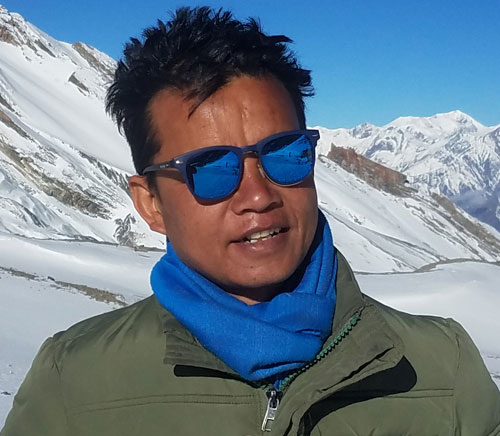The Limi Valley Trek is one of our favorite treks and we’d be delighted to help you explore this remarkable region in Nepal.
Limi valley is the hidden valley situated in the far western corner of Nepal, Humla district. It offers the real lifestyle of the Himalayas. Travelers have very few footprints on the rugged and remote valley, Limi. Limi valley signifies the ancient gompas, beautiful nature, wonderful culture, climatic variety, rare and endangered wild animals, natural flora and fauna. Isolated by snow and ice and surrounded by Himalayan peaks, this trek follows ancient salt trade route and pilgrim's trail of Nepal border and Tibet passing through the typical village of Tibetan cultured people with distinct lifestyles. Thus, the Limi Valley Trek will be one of the finest trekking experience in highland Nepal were expecting the unexpected is a certainty.
Limi is a Tibetan word."Le" means the land between two rivers in Tibetan and "Mi" means people. Le-Mi means people living or situated on land between two rivers. Limi valley trekking is a mixture of cultures both Buddhist and Hindus. It holds the history and glory of the Great Himalayas. The people of Limi speak the Tibetan language on a daily basis. The most important festival of Limi valley is Losar celebrated for 3-5 days. RIM-CHOE and DUELA are also an important festival. Limi Valley is the core attraction, famous and popular of the magnificent views of Himalayan perks, Mt. Saipal(7030m), of Himalayan perks, Mt. Saipal(7030m), Mt. Kailash, Mt. Kanjiroba. Limi has been known to be the unexplored place for wildlife, animals, birds, plants, and vegetation. In Limi valley when the person dies, then their dead body is taken to high holy mountains area and offers it to birds and wild aminals by cutting it into small pieces. The three ethnic Limi valleys are Till, Jhang, and Halji.
Til(4,100m/13,500 ft): It is surrounded by barley fields and at the western side of Limi Valley. At the right side of the village, an easily falling water which provides the water supply as it going down of the village. The houses are well constructed from dry stone and conversing with neighbors. Til village is least population village of Limi villages, of around 30 families living in there. Kunzum Do-Nag Choeden Monastery(more than 300 yrs old) is situated right crossing easy falling water.
Jhang(3930m/12,894ft.): It is easternmost and well-situated village according to geographical than two other villages. In the early 13th century of Gompa (Monastery) is prominently located above the village. It has almost 100 families population. There is not much agricultural land around the village but huge hinterland of Yak, Sheep & Goat grazing areas located in the deep gorge of upper Limi valley. It touches another side of the border to Tibet that makes them more easy to transport than the other two. It is set alongside and facing the river on the gently sloping north side of the valley amidst terraced barley fields.
Halji(3700m/12,140ft.): It is located between Tila and Jhang. It is the biggest village in Limi valley. It is the monastic headquarter of Limi Valley. The central focus of the village is an old historical Gompa (Halji Rinchenling Monastery) established in the early 10th century where many religious festivals and rituals are performed. Famous Translator Lotsawa Rinchen Zangpo, built the Halji Rinchenling Monastery(Gompa) serves as the Spiritual Headquarter of the Trulku Senge Tenzin Rinpoche now. The monastery belongs to the Drikung Kagyu School of Tibetan Buddhism like all the Monasteries in Limi Valley. It is said that he built across 108 Monasteries and Stupas the Entire Himalayan Region, the Halji Rinchenling Monastery Stands at 108th.
History
Limi has been part of the Ngari region, Tibet renowned as the top of the world. Ngari is the land of sacred Mt. Kailash and Manasarovar. The sea of ice and snow, the land is dotted with sacred mountains, sacred rivers, and sacred lakes. Ngari in western Tibet and Humla in northwestern Nepal was divided in Sino- Nepalese Border Treaty. Though there isn't written evidence the history of Limi due to lack of education verbally, it is said that some people of Ngari region settled in a place called Tsamtso, situated between the tributaries of Karnali trading calls as Ley-mi which means people staying in the river valley. So, these terms have come to identify the Limi community in Nepal.
Highlights
- A scenically and culturally diverse trek over two high passes into the most remote follows the ancient salt trade route and pilgrim's trail of Nepal border and Tibet
- Old historical gompas and subtropical scenery, including rhododendron forests and pine woods, to arid wilderness desert
- Exhibits the magnificent views of Himalayan perks, Mt. Saipal, Mt. Kailash, Mt. Kanjiroba and the spectacular scene of rivers, meadows, jungle, birds, and vegetations, grassy pastures, barren rock hill
Duration
Season
Region
Grade
Altitude
Walking
Accommodation
Trip Type
Transportation

Certificate of Excellence
Based of services & reviewTrek Map
Need More help ?
Talk to our travel experts by phone, email, WhatsApp/Viber, WeChat! We love to talk travel ! We're here to help and happy to assist you with your booking and make your dream come true.

Mr. Tsering D. Sherpa
(National Mountain Leader)
Mountaineering, Treks & Tours
- +977-9862258888
(WhatsApp,Viber)7/24 - mytrek2@gmail.com
info@himalayansherpaadventure.com
RELATED TRIPS

Tibet Overland Tour
Tibet overland tour is one of the adventurous journey on very ....

4 Days Lhasa Tour
The 4 days fly in fly out Lhasa Tour is a short and best combination ....

Kailash Manasarovar Tour
Manasarovar Lake - The Lake Manasarovar in Tibetan is very beautiful ....











